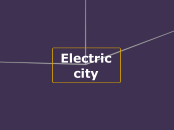Common Ancestor for All Life -ester bonds
-DNA present
Eukarya and Archaea Common Ancestor -presence of histones
-multiple RNA
-no peptidoglycan
Archaea
No membrane bound organelles
No chromosomes in nucleus
Ether bonds
Eukarya
-membrane bound organelles
-chromosomes in membrane bound nucleus
Excavata
-feeding groove
-secondary plastids
SAR Clade
Rhizaria
-filose pseudopodia
Foraminifera
Radiolarians
Common ancestor of Stramenopila and Alveolata
Alveolata
-membrane vesicles
-secondary plastids
-Dinoflagellates have secondary or tertiary plastids
Stramenopiles
-tripartite flagellar hair
-secondary plastida
Kelp
Diatoms
Unikonta
-heterotrophic
Amebozoa -pseudopiles
Opisthokonta
-single posterior flagellum on swimming cells
-absorptive heterotrophy
Kingdom Fungi
-multicellularity
-chitin cell wall
-zygotic life cycle with dikaryotic stage
Common Ancestor of Choanoflagellatea and animals
Kingdom Animalia
-multicellularity
-mobility
-complex organ systems
-gametic life cycle
Eumetazoa
-tissues
Cnidaria
-radial symmetry
-diploblasty
Anthozoa
-usually only polyp
Medusozoa
Scyphozoa
-usually only medusa
Hydrozoa
-polyp and medusa
Bilateria
-triploblasty
-bilateral symmetry
-cephalization
Protostomia
-spiral and determinate cleavage
-blastopore becomes mouth
Ecdysozoa
-ecdysis
-metamorphosis (most)
Nematoda
-round worms
-free-living and parasitic
-cuticle
-pseudocoelom
-complete digestive tract
Anthropoda
-"jointed foot"
-segmented
-exoskeleton made of chitin
-complete digestive tract
-open circulatory system
Chelicerates
-cephalothorax and abdomen
-4 pairs of walking legs, pedipalps, chelicerae
Pancrustaceans
Hexapoda
-six legs
-insects
-many have wings (crucial to their success as a group)
-head, thorax, abdomen
Crustaceans
-cephalothorax
Lophotrochozoa
-lophophore and/or trocophore larvae
Common ancestor of Mollusca and Annelids
Mollusca
-soft-bodied
-foot, visceral mass, mantle
-coelomates
-organ systems
Bivalvia
-two-part shell
Cephalopoda
-reduced or absent shell (except nautilus)
-closed circulatory system
Gastropoda
Annelida
-segmented worms
-closed circulatory system
-complete digestive tract
Platyhelminthes
-acoelomates
-incomplete digestive tract
-no respiratory or circulatory system
Tapeworms
-parasitic
-no digestive
Trematodes
-parasitic
Free-living Rhabditophorans
Deuterostomia
-radial and indeterminate cleavage
Echinodermata
-"spiny skin"
-water vascular system
-adults radially symmetrical, larvae are bilaterally symmetrical
-no brain
-complete digestive tract
Asteroidea
-sea stars
Echinoidea
-sea urchins and sand dollars
Ophiuroidea
-brittle stars
Holothuroidea
-sea cucumbers
Chordata
-notochord
-dorsal nerve cord
-pharyngeal slits
-endostyle
Cephalochordata
Common Ancestor of vertebrates and urochordates
Urochordata
Vertebrata
-cranium
-vertebral column
Agnathans
(Cyclostoma)
Myxini (hagfish)
Petromyzontida (lampreys)
Gnathostomes
-jaws
-bony skeleton
Osteichthyes (bony fishes)
-lungs/ lung derivatives
Lobe-finned fishes (Sarcopterygii)
-skeleton extends into the fin
Coelocanths
Common ancestor of lungfishes and tetrapods
Lungfishes
Tetrapods
-4 limbs with digits
Amniotes
-amniotic egg
Reptiles
-ectothermic
Archosaurs
Common ancestor of birds and crocodilians
Crocodilians
Birds (Aves)
Turtles
Lepidosaurs (snakes, lizards, amphisbaenians)
Mammals
-hair
-milk
Monotremes
-egg-laying mammals
Common ancestor of Marsupials and Eutherians
Marsupials
Eutherians
Amphibians
-non-amniotic egg
Ray-finned fishes (actinopterygii)
Chondrichthyes
-bony skeleton lost
-cartilaginous skeleton in extant species
Porifera
-asymmetry
-no tissues
Choanoflagellatea
Archaeplastida
-primary plastids
Rhodophyta
-phycoerythrin photosynthetic agent
Common ancestor of chlorophytes, charophytes, and land
plants
-Chlorophyll a & b and b-carotene (traits chart)
-Cellulose-rich cell walls (traits chart)
Chlorophytes
Common ancestor of charophytes and land plants
-ring-shaped cellulose-synthesizing proteins (traits chart)
-phramgoplast
Charophytes
Braun's stonewort
-zygotic life cycle
Common ancestor of land plants
-sporic life cycle
-embryo
-dessication-resistant spores
-gametangia
-sporangia
Liverworts
Common Liverwort
Common ancestor of mosses, hornworts, lycophytes,
monilophytes, gymnosperms, angiosperms
Mosses
Wooly Feather Moss
Common ancestor of hornworts, lycophytes, monilophytes,
gymnosperms, angiosperms
Hornworts
Field Hornwort
Common ancestor of lycophytes, monilophytes,
gymnosperms, angiosperms
-Lignin
-xylem and phloem
-thick waxy cuticle
-stomata
-leaves
Lycophytes
Fan clubmoss
Common ancestor of monilophytes, gymnosperms, angiosperms
-megaphylls
Monilophytes
Eastern Marsh Fern
Common ancestor of gymnosperms and angiosperms
-pollen
-seeds
-heterospory
-wood
-ovules
Angiosperms
-endosperm
-fruit
-flowers
-ovaries
White Water Lily
Southern Magnolia
Gymnosperms
Scotts Pine
Bald Cypress
Bacteria
-simple RNA polymerase
-no histones
-no membrane bound organelles
-membrane bound nucleus
-cell wall contains peptidoglycan









